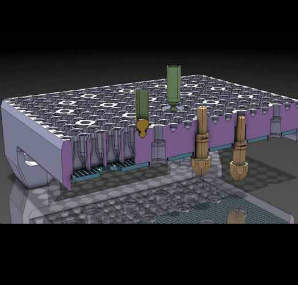France-based nuclear fuel cycle company AREVA posted a first half loss of revenue (down 12% to EUR 3.89 billion compared with the same period last year) and profits (EBIDTA down EUR 231 million to EUR 256 million) and a revised financial outlook: revenue down 10% for full year 2014, but up about 4% in 2015.

French nuclear fuel cycle company AREVA posted a first half loss of revenue (down 12% to EUR 3.89 billion compared with the same period last year) and profits (EBIDTA down EUR 231 million to EUR 256 million) and a revised financial outlook: revenue down 10% for full year 2014, but up about 4% in 2015.
It said that the nuclear market is still ‘deteriorated’, with downward pressure on maintenance and modernization budgets for existing reactors, slower than expected return-to-restart in Japan, and reduction in fuel cycle market prices, among other factors. It was hurt by losses in its renewables business, and discontinued its loss-making concentrated solar power operation.
Still, there were some positives, in particular a EUR 6.5 billion agreement on terms of the treatment and recycling agreement with EDF for the 2013-2020 period, which includes an extended term and increased volumes. In the same period, it also achieved full commissioning of the new Comhurex II conversion facilities at Malvési, and installed the EPR reactor vessel at Flamanville 3, among other projects.
Orders taken in the first half of the year include a digital instrumentation and control system for an unnamed power plant currently under construction, and reactor safety systems including reactor building venting and filtration systems and backup generator systems in Spain and Switzerland.
In other news, six U.S. nuclear utilities have established a technical advisory board for the deployment of GAIA, AREVA’s next generation pressurized water reactor fuel assembly design. These six utilities – including Dominion, Duke Energy, Exelon and PSEG – share a common interest in ensuring the technical advancement and demonstration of this fuel for the U.S. market.
As part of this programme, one of the utilities will operate a set of eight lead test assemblies starting in spring 2015. "Developed to meet the ever-increasing needs of nuclear utilities, the GAIA fuel assembly is focused on ensuring the safety and robustness of nuclear fuel operations," said Guillaume Dureau, senior executive vice-president of AREVA’s Front End Business Group. "Successfully used in 2012 in the Ringhals power plant in Sweden, GAIA offers customers optimal performance and a high burn-up capability."
The innovative GAIA fuel design has a new spacer grid, new bottom nozzle machined from a single block of alloy and thicker guide thimbles compared to previous designs. These changes result in higher mechanical fretting resistance, improved thermal performance and increased tolerance to earthquakes, AREVA said. The design also features advanced cladding which will meet anticipated changes in U.S. regulatory requirements, AREVA said.
